Firefighter: description and methods of struggle

Firefly is a harmful insect that damages garden plants and more. Read about how it looks and in what ways you can fight it below.
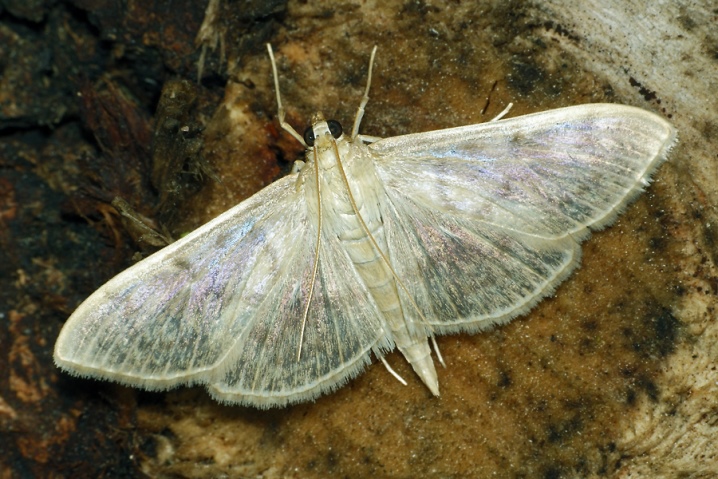
Description and varieties
Firefly is a whole family of butterflies that are garden pests. It is a large insect with light brown wings with a white border. The family of fireflies numbers about 6200 species of these butterflies, among them there is a sunflower firefighter, pine cone, boxwood, pear, apple, fig, mill and others. As the name implies, this insect can be found both on fruit trees like apple, pear and fig, and on sunflower.
The fire lays eggs on the inside of the sheets. In one season, she is able to lay about 200 eggs. You can recognize this butterfly by its caterpillar or pupa. So, the caterpillars of this insect have a yellow-green body covered with fine hairs, a black head and can reach 5 centimeters in length.
They feed mainly on the foliage of the plant, in the process harming them.

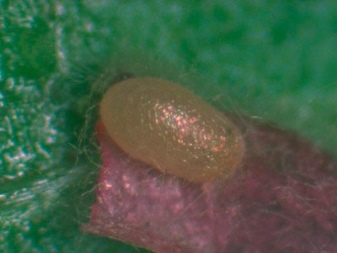
If we talk about the pupae of the fire, then the caterpillars enter this phase after 3-4 weeks - the period depends solely on the temperature of the air masses: the higher it is, the faster the process... The pupa has a light green color and is located in a loose cocoon, its length is about 3 centimeters. The insect stays in this state for about 2 weeks, after which a butterfly appears. The butterfly also hibernates in a pupal state. In total, this insect can give about 2-3 generations, however, if the climate allows it, a 4th generation can appear.
For humans, this insect is completely harmless, however, it causes enormous damage to plantings and, in critical cases, can destroy more than 80% of the crop.


Signs of defeat
You can understand that a fire has started up on your plant by a number of signs:
- on the foliage and shoots of the planting, you can see a thin cobweb, as well as the skins of larvae and waste products of caterpillars;
- a lot of the caterpillar itself appears on the branches and leaves;
- on the ground, it is easy to notice whole layers of residues from greenery, as well as excrement, which smells unpleasant and specific;
- the plant begins to dry out quickly, and the inflorescences, if the tree was affected during the budding period, begin to turn brown and dry;
- fruits that have been damaged turn black and also dry, but do not fall off, but hang on the plant until the next year.
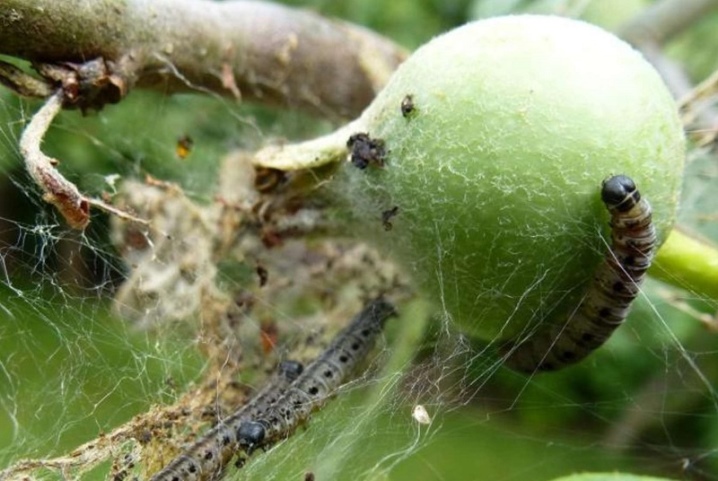
Ways to fight
Chemical methods
Chemicals are the most effective and will help you get rid of the harmful insect completely. But it should be borne in mind that such funds are not safe for humans. They must be used strictly according to the instructions, while observing the safety rules and using protective equipment, including a protective mask and rubber gloves.
Among the chemicals that will help fight fire, the most prominent are "Decis Profi", "Actellic" and "Engio". These are contact means that must be combined with means of systemic action. These include drugs such as Confidor Maxi and Aktara.
The aforementioned remedies are especially effective against already formed butterflies. For the fight against caterpillars, drugs such as "Match" and "Lepidocide" are suitable.
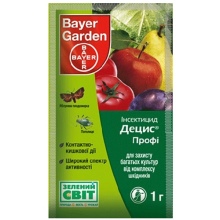
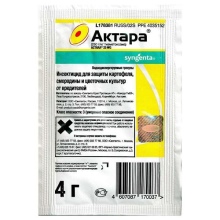

Please note that processing alone will not work. These funds work for about 2 weeks, a maximum of 20 days, and the insect's development cycle lasts, in turn, more than a month. Therefore, you will have to process it about 2-3 times.
When spraying with chemicals, it is necessary to carefully treat the entire surface of the foliage. You can also use watering the plant with a solution based on the drug "Aktara". For a visible effect, it is necessary to wet the soil by 30-40 centimeters. This treatment is enough for the entire life cycle of the parasite.
note that when processing this kind of means, it is necessary to take into account the temperature of the air masses, otherwise there is a risk of harm to your health.
So, if the temperature exceeds +25 degrees, it is recommended to try using other means.
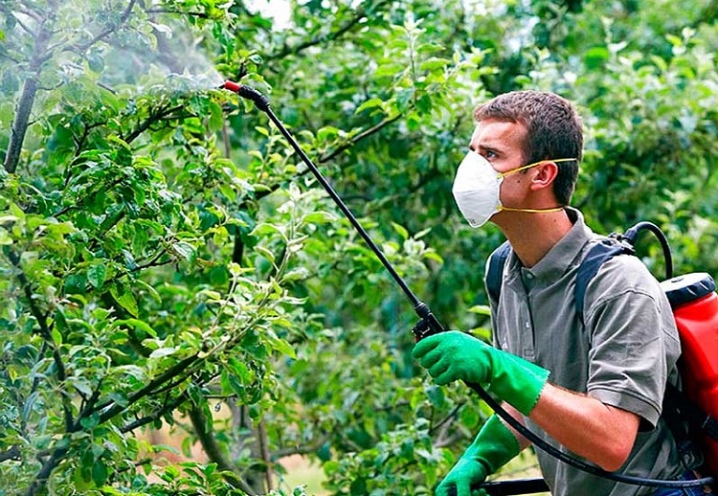
Folk recipes
To get rid of a harmful butterfly, it is not at all necessary to poison it. You can resort to folk solutions, which can be made with your own hands at home. They are unlikely to be able to exterminate the parasites, but they are completely scared away.
So, dry mustard can be used for the solution. You will need 0.1 kilogram of this ingredient and a bucket of water. All this must be mixed and left for 2 days to infuse at room temperature. Before use, the finished solution should be filtered and diluted again with water in a ratio of 1 to 2.
To combat the fire, the extract of needles will also be very effective. To do this, you need 0.2 kilograms of needles and 2 liters of heated water. All this must be mixed, covered and given a week for tincture, stirring the mixture every day. The finished solution should be filtered and diluted in a ratio of 1 to 10. Then you can start spraying, which must be carried out at weekly intervals during the entire flowering phase.


Another component for the infusion is wood ash. You will need a kilogram of raw materials, which must be poured into a bucket of water and left for a week for tincture. After the time has elapsed, the mixture must be filtered and added there soap, which is needed so that the mixture is fixed on the foliage. Treatment with such a solution should be carried out during the formation of ovaries.
Another ingredient that will be effective in combating flames is tobacco. For the mixture, you need 0.4 kilograms of shag or tobacco dust. The main component must be poured into a container with 10 liters of water and allowed to infuse for 2 days. After this time, the solution must be diluted again with the same amount of water, after which the plants can be sprayed at weekly intervals, starting from the flowering phase.
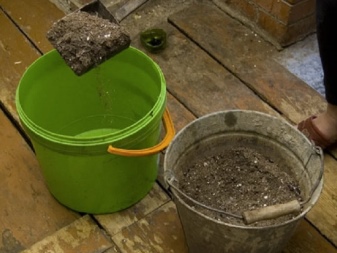
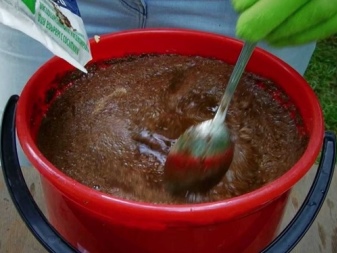
Prevention measures
Compliance with preventive measures cannot guarantee 100% that this harmful butterfly will not start on your plant. However, this will help reduce the likelihood of a pest appearing to a minimum.
So, first you need to inspect the plants on an ongoing basis. This is done in order to notice the appearance of the pest at the initial stages and prevent it from proliferating.

If we are talking about protecting shrubs, then it makes sense to huddle the soil by 10-15 centimeters. In this case, if the butterflies decide to winter in the ground, this will prevent them from getting out and laying eggs.
Mulching the beds will also be effective, for which you can use compost or peat. Pests will not be able to get out of the ground and will not harm your plantings.
During flowering, it will be wise to resort to covering the soil around the plant with a polyethylene film. This will also prevent harmful insects from reaching your plants.
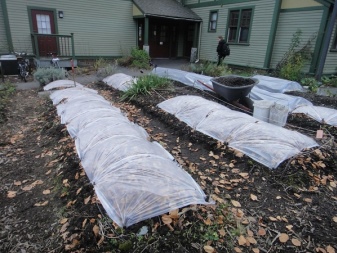
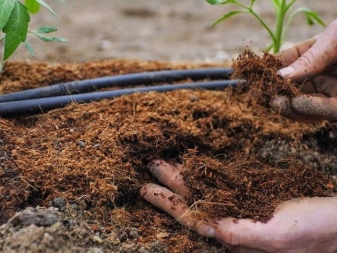













The comment was sent successfully.